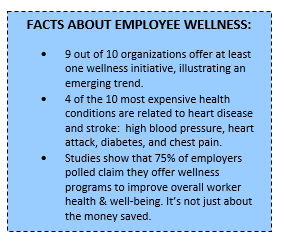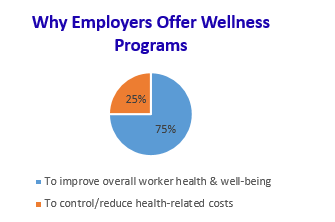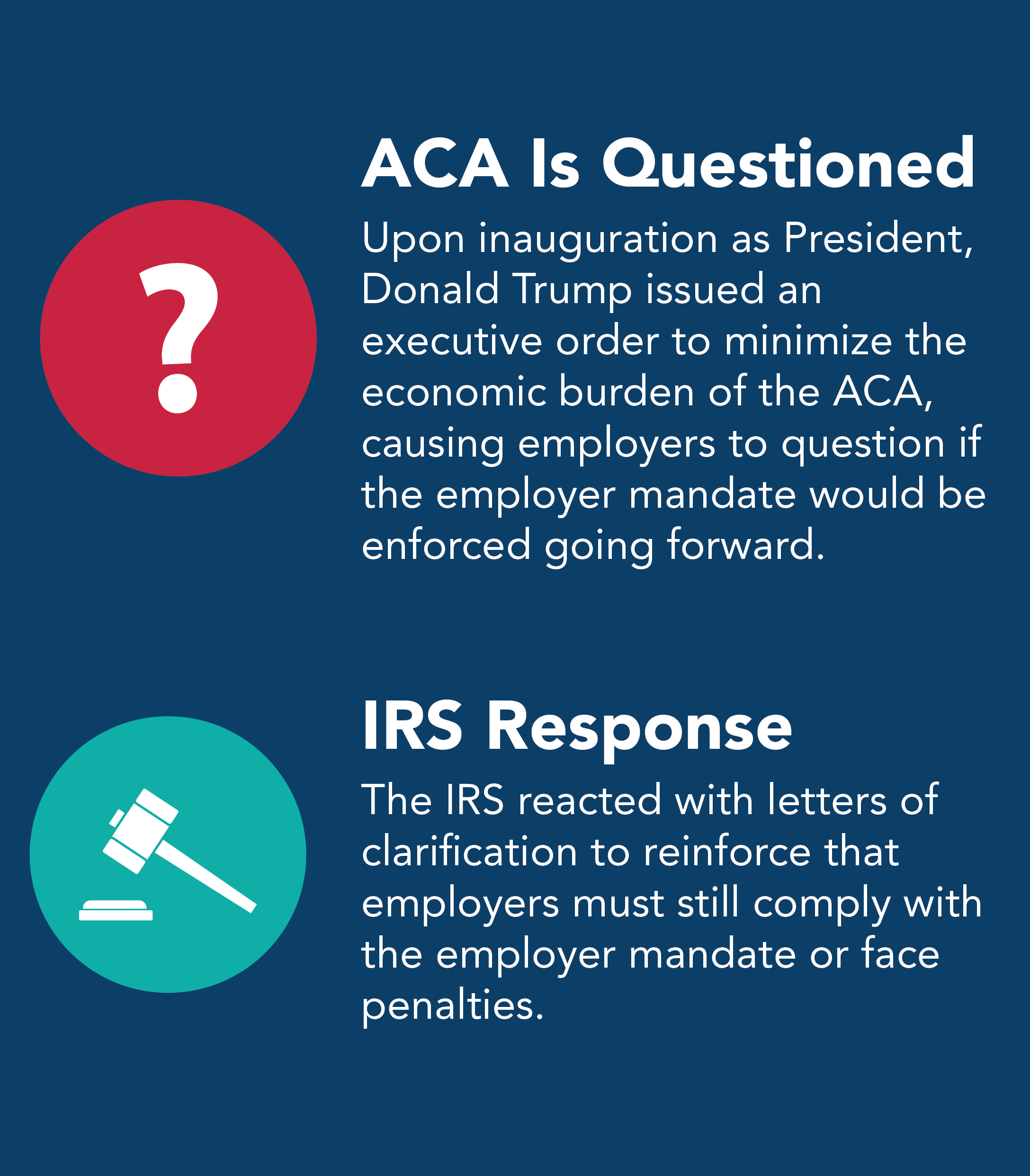Posted on December 10, 2018
 The Internal Revenue Service (IRS) recently released the 2019 annual contribution limits for Health Flexible Spending Accounts (FSA) which will take effect on January 1, 2019.
The Internal Revenue Service (IRS) recently released the 2019 annual contribution limits for Health Flexible Spending Accounts (FSA) which will take effect on January 1, 2019.
The annual limit on voluntary employee salary reductions for contributions to a health flexible spending account will be $2,700 in 2019, which is an increase from the prior limit of $2,650. The annual limit also applies to the limited purpose FSA, which can be used for dental and vision expenses.
When does this affect your plan?
The limit increase will apply when the employer’s FSA plan year begins. For example, if the plan year begins on June 1, the limit increase will kick in on June 1, 2019 during the open enrollment period.
| Health Flexible Spending Accounts Contribution Limits |
| Tax Year |
Annual Limit |
| 2019 |
$2,700 |
| 2018 |
$2,650 |
For more information on the increased Health FSA limits, review the IRS news release, IRS: Plan now to use Health Flexible Spending Arrangements in 2019.
Interested in learning more about Flexible Spending Accounts? Click here.

It’s widely known that work-related injuries and illnesses, chronic diseases, absenteeism, and sick employees who return to work before getting well negatively impact the bottom line of companies of all sizes. According to the CDC Foundation, these occurrences cost U.S. employers billions of dollars each year. With healthcare costs continuing to rise, employers have realized that improving employee health and wellness is an effective way to lower costs, improve productivity, and decrease absenteeism. By now, you may have realized the advantage of embedding wellness into your own workplace culture. If not, you may want to consider how you can promote good health and fitness among your employees, and the potential long-term benefits to both your company and your workforce.
year. With healthcare costs continuing to rise, employers have realized that improving employee health and wellness is an effective way to lower costs, improve productivity, and decrease absenteeism. By now, you may have realized the advantage of embedding wellness into your own workplace culture. If not, you may want to consider how you can promote good health and fitness among your employees, and the potential long-term benefits to both your company and your workforce.
What is Workplace Wellness?
The CDC (Centers for Disease Control and Prevention) defines a workplace health program as “a health promotion activity or organization-wide policy designed to support healthy behaviors and improve health outcomes while at work”. Wellness programs can focus on issues such as smoking cessation, diabetes management, weight management, and preventative health screenings, among many others.
Workplace wellness programs also embrace policies aimed at promoting employee health, including time allowances for exercise, providing on-site kitchens and eating areas, stocking the vending machines with healthy food options, and offering financial and other incentives for participation. Effective wellness programs and supportive policies are those that successfully motivate employees to not only care about their health but to actually take steps to maintain and/or improve it, which in the long run can positively impact employers, employees, their families, and communities at large.
Why Workplace Wellness?
Wellness programs sponsored by employers promote long-term employee health and reduce total insurance spending. These programs allow an employer to offer premium discounts, cash rewards, gym memberships, and other incentives to participate. Employers can provide a supportive environment to encourage their workers to adopt healthier lifestyles, which can in turn result in reduced claims, increased productivity, and fewer sick days. When employees commit to taking better care of themselves, they can benefit physically, emotionally, mentally, and financially. Health and wellness can have an impact on the bottom line of all concerned.
Rewarding the Positive
The 2016 Employer Health Benefits Survey conducted by the Kaiser Family Foundation states that 83% of large firms (200+ employees) offer
a wellness program that supports smoking cessation, weight management, or behavioral/lifestyle coaching. Forty-two percent of these large firms offer financial incentives for participation, such as lower premium contributions and cash to employees. Incentives are key to the success of a wellness program, and can be incorporated into the program by rewarding employees for attaining certain health-related goals, such as completing a health risk questionnaire or a biometric screening. Competition and one-on-one coaching are also common features of wellness programs. The PwC Health and Wellbeing Touchstone Survey from June 2016 shows that program participation increases when incentives are added to the mix. For example, when a health screening was offered with no incentive, participation was at 40%, as opposed to 57% when an incentive was involved.
Is it All Worthwhile?
In any business, employers are keen on seeing a return on their investments. With wellness programs, employers tend to see ROI in tangible ways, such as reduced absenteeism and a reduction in certain medical claims (e.g. urgent care visits instead of emergency room visits). An added benefit is that employers will often see an increase in the Value of Investment (VOI), indicated by increased loyalty, employee retention, and a boost in employee morale.
According to findings from the International Foundation of Employee Benefit Plans Workplace Wellness 2017 Survey Report, employers that offer and measure their wellness initiatives experienced increases in both ROI and VOI, with 92% of workplaces that offer wellness programs reporting their initiatives to be very or somewhat successful.
| Decreased Absenteeism |
50% |
| Financial Sustainability/Growth in the Organization |
63% |
| Increased Productivity |
66% |
| Increased Employee Satisfaction |
67% |
The IFEBP 2017 survey results also seem to indicate that responding employers are not primarily concerned with controlling or reducing health-related costs. In fact, the adjacent graphic illustrates that 75% of respondents were more concerned with improving overall health and well-being. Employers are increasingly realizing that wellness is more than just physical health. It also impacts the health of the organization, employee productivity, and overall happiness. Employees that feel empowered to take better care of themselves should experience less stress in their lives both on the job and off, creating happier, more productive employees.
increasingly realizing that wellness is more than just physical health. It also impacts the health of the organization, employee productivity, and overall happiness. Employees that feel empowered to take better care of themselves should experience less stress in their lives both on the job and off, creating happier, more productive employees.
It seems clear that wellness is “shaping up” to be a key area of investment and strategy for employers year after year. Creating a healthier work environment may be a critical piece of your organization’s success. Introducing wellness programs can show your employees that you are their partner, which is likely to be a win-win for both you and your workforce.
Posted on January 17, 2018
 The Department of the Treasury and the Internal Revenue Service (IRS) have determined that additional time will be needed for many employers, insurers, and other providers of minimum essential coverage (MEC) to gather the necessary information to prepare the 2017 Forms 1095-B and 1095-C that must be issued to individuals under Sections 6055 and 6056. With the release of Notice 2018-06 on December 22, 2017, the IRS has exercised its right to grant an extension of up to 30 days to furnish Forms 1095-B and 1095-C, delaying the January 31, 2018 deadline to March 2, 2018.
The Department of the Treasury and the Internal Revenue Service (IRS) have determined that additional time will be needed for many employers, insurers, and other providers of minimum essential coverage (MEC) to gather the necessary information to prepare the 2017 Forms 1095-B and 1095-C that must be issued to individuals under Sections 6055 and 6056. With the release of Notice 2018-06 on December 22, 2017, the IRS has exercised its right to grant an extension of up to 30 days to furnish Forms 1095-B and 1095-C, delaying the January 31, 2018 deadline to March 2, 2018.
Employers should now be aware of these important deadlines:
- March 2, 2018 – Forms 1095-B and 1095-C must be provided to employees
- February 28, 2018 – Deadline for 2017 paper filing with the IRS
- April 2, 2018 – Deadline for 2017 electronic filing with the IRS
Even though an extension has been granted, employers and other coverage providers are encouraged to issue their 2017 statements to employees as soon as they are able. There has been no change to the deadline for filing 2017 returns with the IRS, and taxpayers do not need to wait to receive Forms 1095-B and 1095-C before filing their tax returns.
The Affordable Care Act added Sections 6055 and 6056 to the Internal Revenue Code, thereby requiring sponsors of health care plans to maintain minimum essential coverage of their employees throughout the year or face potential fees. Further, every provider of MEC must report coverage information by filing an information return with the IRS and furnishing a statement to individual employees.
MidAmerica’s ACA Reporting Solutions help ease the sponsor’s administrative and compliance burden by filing 1094 and 1095 forms on behalf of the employer. Whatever your form-filing needs are, we have a solution that works for you. With over 20 years of public sector compliance experience, we have the products and industry knowledge to ensure our clients are compliant under the ever-changing ACA regulatory landscape. If you are ready to save time and headaches on forms filing, while avoiding the risk of inaccurate reporting, click the button below to enroll in MidAmerica’s ACA Reporting Solution.
ACA Reporting: Enroll Now
Posted on November 22, 2017

 Comprehensive healthcare reform legislation was signed into law by President Barack Obama on March 23, 2010. Known as the Patient Protection and Affordable Care Act, it was nicknamed the ACA or Obamacare. The ACA stipulates “employer shared responsibility rules” which require applicable large employers (ALEs) to offer affordable, minimum value health insurance coverage to their full-time employees or pay a penalty. These rules apply to employers with at least 50 full-time employees during the preceding calendar year. The employer shared responsibility rules are also known as the “employer mandate” or the “pay or play” rules. An “ALE” may be penalized if one or more full-time employees obtain a subsidy through the healthcare exchange because the employer did not offer health coverage, or the coverage offered is not affordable or does not provide minimum value.
Comprehensive healthcare reform legislation was signed into law by President Barack Obama on March 23, 2010. Known as the Patient Protection and Affordable Care Act, it was nicknamed the ACA or Obamacare. The ACA stipulates “employer shared responsibility rules” which require applicable large employers (ALEs) to offer affordable, minimum value health insurance coverage to their full-time employees or pay a penalty. These rules apply to employers with at least 50 full-time employees during the preceding calendar year. The employer shared responsibility rules are also known as the “employer mandate” or the “pay or play” rules. An “ALE” may be penalized if one or more full-time employees obtain a subsidy through the healthcare exchange because the employer did not offer health coverage, or the coverage offered is not affordable or does not provide minimum value.
The ACA Is Questioned
Upon his inauguration as President on January 20, 2017, Donald Trump signed an executive order to minimize the economic burden of the ACA until the law can be repealed and replaced. The order did not provide specific guidance related to any particular provision or requirement of the ACA, and appeared to be more of a mission statement for the President’s administration going forward. Further, only Congress is authorized to make changes to the ACA, i.e. through the legislative process. The President is not empowered to alter legislation. Nevertheless, business owners took notice of this executive order and began to wonder if the employer mandate would go away, along with any associated penalties.
The IRS Responds
The President’s executive order created confusion when it directed the Department of Health and Human Services and other federal agencies to “waive, delay, or grant exemptions from ACA requirements that may impose a financial burden”. In response, the Office of Chief Counsel within the IRS issued Letter numbers 2017-0010 and 2017-0013 on April 14, 2017, to clarify the impact (or lack of impact) of the executive order on the employer mandate rule. These letters confirmed that the pay or play rules continue to apply. Taxpayers must still adhere to the ACA requirements, including paying any penalties they may owe.
Where Do We Stand?
For the time being, it’s business as usual. Although both houses of Congress challenged the ACA between May and September 2017, all efforts failed to repeal and replace the law. The result is that the ACA is still in effect until the Senate and/or House, both Republican-led, can craft a viable alternative that will garner sufficient votes to proceed to the President’s desk for signature. In the meantime, ALEs must continue to comply with the employer shared responsibility rule as well as any other reporting requirements.
In fact, The ACA Times has reported that “all signs point to the IRS being prepared to enforce the employer shared responsibility mandate of the ACA”. The website suggests that by December 2017, “the IRS could be sending enforcement notices to inform businesses with 50 or more employees what they owe for failing to comply with the employer shared responsibility mandate”. These notices will serve to enforce the ACA compliance mandate starting with the 2015 tax year. The IRS website does not contradict this opinion and provides a lengthy Q&A dedicated to the employer shared responsibility provisions under the ACA, including information on how employers will be notified of any penalties assessed and how payments will be collected. Now that the myth of the employer mandate waiver has been dispelled, employers would be wise to ensure they have filed all necessary documentation with the IRS to minimize any potential penalties, and then revisit the status of their health insurance offerings and prepare to be ACA compliant, to avoid possible penalties in future tax years.
Where Can Employers Find Help?
Despite a series of attempts to repeal the Affordable Care Act, the law is still intact. As your benefits compliance experts, MidAmerica will continue to monitor the status of any potential healthcare reform and ensure you are aware of any effects new legislation could have on your clients’ retirement and healthcare benefit plans. We are committed to providing quality benefits solutions to public sector employers while meeting their budget objectives. This commitment drives us to meet changes in the benefits environment with products that will ensure employers are compliant while receiving the best value for their money.
Three Forms Filing Service Options
The 1094/1095 forms filing deadlines for the § 6055 and § 6056 reporting requirements are quickly approaching. MidAmerica can help, no matter what your forms filing needs may be. We offer three ways to file your IRS required forms.

If you would like to learn more about our forms filing packages, please email AccountManagement@myMidAmerica.com.
Posted on November 14, 2017
If you sponsor a 403(b) plan for your employees, you must satisfy the “universal availability” requirement as established by the IRS. According to IRS.gov, all employees of the employer must be eligible to make elective deferrals if any employee has the right to do so, with certain limited exceptions. Certain part-time employees may be excluded from eligibility to make elective deferrals.
The IRS also requires that any employer sponsoring a 403(b) plan must notify all eligible employees of this benefit at least once annually. In doing so, you are providing an “effective opportunity” for eligible employees to participate in the plan.
Top Three Ways to Notify Your Employees
Your plan administrator may provide communication templates you can personalize and distribute to your employees to make the notification process simpler. There are 3 methods by which you can distribute the notices:
- Mail. If choosing this method, be sure to retain the list of addresses used and the postage receipt.
- Hand Delivery. Prepare a list of employee names and have each employee sign their name to acknowledge receipt.
- Email. Strict guidelines must be followed for electronic delivery, but email is permitted.
If you choose to email the Universal Availability notices, this method is recommended in addition to mailing or hand delivery, not instead of. It should not be assumed that all recipients have access to a computer.
IRS Distribution Guidelines
The IRS has indicated they are auditing an increasing number of 403(b) plans, particularly in regards to Universal Availability compliance. An employer found to be non-compliant may have to make contributions to the plan on behalf of any eligible employees who did not receive proper notice. According to the IRS, compliance must be shown on a “facts and circumstances” basis. Treas. Reg. Section 1.403(b)-5(b)(2) stipulates that:
“…An employee is not treated as being permitted to have section 403(b) elective deferrals contributed on the employee’s behalf unless the employee is provided an effective opportunity….Whether an employee has an effective opportunity is determined based on all the relevant facts and circumstances, including notice of the availability of the election, the period of time during which an election may be made, and any other conditions on elections. A section 403(b) plan satisfies the effective opportunity requirement only if, at least once during each plan year, the plan provides an employee with an effective opportunity to make (or change) a cash or deferred election between cash or a contribution to the plan….”
Although the IRS has not provided distribution guidelines specific to 403(b) plans, the “best practice” is to follow the clearer IRS and DOL rules that have been developed for other types of retirement programs. Failure to comply with Universal Availability could disqualify the entire plan, so it’s better to be safe than sorry.
Are you a current MidAmerica client? You can download Word templates of our Universal Availability notice by clicking on the links below.
Limited Eligibility
For plans which exclude certain employees from participation.
No Exclusions
For plans which allow all employees to contribute.
Posted on November 6, 2017

The Internal Revenue Service recently released the 2018 annual contribution limits for Health Flexible Spending Accounts as well as IRC types 403(b) and 457(b).
Health Flexible Spending Accounts
The annual limit on voluntary employee salary reductions for contributions to a health flexible spending account will be $2,650 in 2018, which is an increase from the prior limit of $2,600. The limit increase will apply when the employer’s FSA plan year begins. For example, if the plan year begins on June 1, the limit increase will kick in on June 1, 2018 during the open enrollment period.
| Health Flexible Spending Accounts Contribution Limits |
| Tax Year |
Annual Limit |
| 2018 |
$2,650 |
| 2017 |
$2,600 |
For more information on the increased Health FSA limits, review Revenue Procedure 2017-58.
403(b) Retirement Plans, Elective Contributions (TSA)
The annual elective deferral limit will be $18,500 in 2018, which is an increase from the prior limit of $18,000.
The following limits will remain unchanged in 2018:
- If you qualify for the full amount of the lifetime catch-up, the catch-up contribution limit remains unchanged at $3,000. This brings the annual total limit for employees who qualify for the lifetime catch-up to $21,500.
- The catch-up contribution limit for employees who are age 50 or over remains unchanged at $6,000. This brings the annual total limit for employees who qualify for the age 50+ catch-up to $24,500.
| 403(b) Plan Contribution Limits |
| Tax Year |
Basic Deferral Limit for All Employees |
Annual Limit if you Qualify for the Full Amount of the Lifetime Catch-Up (15 Years of Service). Total Lifetime Catch-Up Max of $15,000 |
Annual Limit if You Qualify for the Age 50+ Catch-Up |
Maximum Annual Contribution if You Qualify for Both the Age 50+ and Lifetime Catch-Ups |
| 2018 |
$18,500 |
$21,500 |
$24,500 |
$27,500 |
| 2017 |
$18,000 |
$21,000 |
$24,000 |
$27,000 |
For more information on the increased 403(b) limits, review the IRS article, IRS Announces 2018 Pension Plan Limitations.
457(b) Retirement Plans, Elective Contributions (TSA)
The annual elective deferral limit will be $18,500 in 2018, which is an increase from the prior limit of $18,000.
The following limits will remain unchanged in 2018:
- The catch-up contribution limit for employees who are age 50 or over remains unchanged at $6,000. This brings the annual total limit for employees who qualify for the age 50+ catch-up to $24,500.
| 457(b) Plan Contribution Limits |
| Tax Year |
Basic Deferral Limit for All Employees |
Annual Limit if You Qualify for the Age 50+ Catch-Up |
| 2018 |
$18,500 |
$24,500 |
| 2017 |
$18,000 |
$24,000 |
For more information on the increased 457(b) limits, review the IRS article, IRS Announces 2018 Pension Plan Limitations.
403(b) and 401(a) Retirement Plans, Employer-Sponsored
(aka, MidAmerica’s Special Pay Plan)
The annual Section 415(c) contribution limits for 403(b) and 401(a) have increased from $54,000 in 2017 to $55,000 in 2018.
To stay up to date on legislative changes and trends, subscribe to our newsletter.
Posted on October 18, 2017
It’s a never-ending battle. Healthcare costs continue to rise. As an employer, how do you cope? If healthcare costs are rising, that means employee health benefit costs are rising. You want to provide a valuable benefit for your employees, to retain and attract good talent. For job seekers, the strength of an employer’s benefits package can be as valuable as the salary, even more so if they have dependents. Employers have to become creative in their financial strategies to limit benefit costs.
How are employers dealing today? Here are 4 strategies that some have adopted:
- Introduce higher premiums or employee cost-sharing. This is a short-term tactic which shifts more of the financial burden to the employee. Although it’s counter-productive for drawing talent, it is still a frequent tactic. Employee cost-sharing offers several options, including higher deductibles and out-of-pocket maximums, moving from a fixed-dollar co-pay to a percentage-based co-insurance model, increasing employee cost for using non-network providers, and increasing employee cost for using brand name prescription drugs over generics.
- Level-funding company healthcare costs. You’re probably familiar with the traditional fully insured plan and the traditional self-funded plan. Level-funding is a hybrid of the two, whereby the plan is filed as a self-funded plan, and the employer pays a fixed and unchanging premium per employee each month. However, after one or two years, the plan is evaluated to see if the employer qualifies for a refund of premium if claims were lower than expected. Likewise, the premium may increase at renewal if claims were higher than expected. With a bit of ingenuity and planning, the employer could simultaneously implement other methods to encourage behavioral changes that lead to healthier lifestyles among employees, allowing the employer to realize premium refunds rather than increases. Which leads to….
- Health and wellness initiatives. This method of cost containment is becoming increasingly more common. Employers have realized that improving employee health and wellness is an effective way to lower healthcare costs and improve productivity. The key to the success of these programs is the use of incentives, such as rewarding employees for participating in a program or attaining certain health-related goals, such as smoking cessation. Wellness programs should be tailored to the individuals, meeting them where they are in order to realistically assist them in reaching healthy goals. Another important condition is the need to measure employee engagement. If you know who is and who isn’t participating in the program, you will have a better understanding of how to implement incentive-based initiatives for the future.
- Consumer-driven health plans. Typically, we are talking about Health Reimbursement Arrangements (HRA), Health Savings Accounts (HSA), and even Flexible Spending Accounts (FSA). These plans allow employees to access funds to cover higher cost-sharing provisions in exchange for lower monthly premiums. With employees being more engaged in the cost of healthcare services, they become better consumers. They may be more inclined to consider the necessity of higher-cost healthcare in certain situations, e.g. going to an urgent care facility vs. the hospital emergency room. Further, this greater insight into how healthcare dollars are spent may also persuade them to make positive behavior changes in their lifestyles, leading to significant reductions in health plan spending year over year. This is a win/win for both employer and employee. Below is a breakdown of the differences between the 3 types of consumer-driven plans.
|
Health Care FSA |
HRA |
HSA |
| What is it? |
It’s an account to help employees pay for eligible medical expenses. |
It’s an account to help employees pay for eligible medical expenses. |
It’s a personal bank account to help employees save and pay for qualified medical expenses. |
| How do you get it? |
Enrollment is through the employer if they offer an FSA. There is no need to enroll in a health plan. |
It’s usually connected to a health plan. If the employer offers an HRA, enrollment is automatic when signing up for the health plan. |
Requires enrollment in a high-deductible health plan that meets a deductible amount set by the IRS. Other IRS guidelines must be met in order to be eligible. |
| Who contributes to it? |
The employee. The employer can also contribute if they choose to. |
The employer. Employee contributions are not permitted. |
The employee, their family, the employer, and anyone else that chooses to. |
| How is the money put into it? |
The employer will deduct money from the employee’s paycheck, before taxes, and put it into the account. |
The employer may contribute on a monthly basis, or may fund the entire contribution amount at the beginning of the plan year. |
The employee can make deposits just like a personal bank account. Family & the employer can also contribute. Employee may be allowed to deposit pre-tax money from paycheck. |
| What happens if I don’t spend all the money in one plan year? |
The employer may choose to allow a carryover up to the IRS limit of $500. |
The employer may allow a certain amount to be carried over into the new plan year. |
Since the employees owns the account, the money will remain until they choose to spend it. |
| Can I keep the money if I leave my job? |
No. The employer keeps the money. |
No. The employer keeps the money. |
Yes. The employee owns the account. |
| When can I start using the funds? |
The employee can start spending down the FSA on the first day of the plan year. |
Different types of HRAs each have their own rules as to when funds can be accessed. The employer will set the rules. |
The employee can start spending down the HSA once enrolled in a high-deductible health plan and has opened the account. |
| Do I have to pay taxes on the money? |
No |
No |
No |
| What can I pay for with it? |
Medical expenses that are determined by the IRS & the employer. This includes dental, vision, and many other health care services and supplies as listed under Section 213(d) of the Internal Revenue Code. |
Medical expenses that are determined by the IRS & the employer. The employer may only allow the HRA to pay for services covered by your health plan. Some HRAs can be used to pay for dental, vision, & other services/supplies listed under Section 213(d) of the Internal Revenue Code. |
Qualified medical expenses, including services covered by a health plan as well as expenses listed under Section 213(d) of the Internal Revenue Code. |
| Can I have other accounts with it? |
Yes. The employee can have an HRA or a dependent care FSA. |
Yes. The employee can have a healthcare FSA and/or dependent care FSA. |
Yes. The employee can have a limited-purpose FSA or limited-purpose HRA, which can only be used for eligible dental and vision services. |
While health insurance premiums will continue to rise, employers have options to potentially reduce escalating costs while still providing a valuable benefit to their employees and encouraging employees to become more invested in their own healthcare. If you’d like to learn how FSAs and HRAs can help you achieve your financial goals, contact us today at accountmanagement@midamerica.biz.
MidAmerica Administrative & Retirement Solutions has been providing retirement solutions since 1995, and health and welfare programs since 2002. Our goal is to maximize benefit dollars for both the employer and the employees. Our staff of highly experienced subject matter experts, ease of technology, and streamlined administration enable us to reach this goal. Please contact us if you’d like assistance in reaching your goals.
 The Internal Revenue Service (IRS) recently released the 2019 annual contribution limits for Health Flexible Spending Accounts (FSA) which will take effect on January 1, 2019.
The Internal Revenue Service (IRS) recently released the 2019 annual contribution limits for Health Flexible Spending Accounts (FSA) which will take effect on January 1, 2019.

 year. With healthcare costs continuing to rise, employers have realized that improving employee health and wellness is an effective way to lower costs, improve productivity, and decrease absenteeism. By now, you may have realized the advantage of embedding wellness into your own workplace culture. If not, you may want to consider how you can promote good health and fitness among your employees, and the potential long-term benefits to both your company and your workforce.
year. With healthcare costs continuing to rise, employers have realized that improving employee health and wellness is an effective way to lower costs, improve productivity, and decrease absenteeism. By now, you may have realized the advantage of embedding wellness into your own workplace culture. If not, you may want to consider how you can promote good health and fitness among your employees, and the potential long-term benefits to both your company and your workforce. increasingly realizing that wellness is more than just physical health. It also impacts the health of the organization, employee productivity, and overall happiness. Employees that feel empowered to take better care of themselves should experience less stress in their lives both on the job and off, creating happier, more productive employees.
increasingly realizing that wellness is more than just physical health. It also impacts the health of the organization, employee productivity, and overall happiness. Employees that feel empowered to take better care of themselves should experience less stress in their lives both on the job and off, creating happier, more productive employees. The Department of the Treasury and the Internal Revenue Service (IRS) have determined that additional time will be needed for many employers, insurers, and other providers of minimum essential coverage (MEC) to gather the necessary information to prepare the 2017 Forms 1095-B and 1095-C that must be issued to individuals under Sections 6055 and 6056. With the release of
The Department of the Treasury and the Internal Revenue Service (IRS) have determined that additional time will be needed for many employers, insurers, and other providers of minimum essential coverage (MEC) to gather the necessary information to prepare the 2017 Forms 1095-B and 1095-C that must be issued to individuals under Sections 6055 and 6056. With the release of 
 Comprehensive healthcare reform legislation was signed into law by President Barack Obama on March 23, 2010. Known as the Patient Protection and Affordable Care Act, it was nicknamed the ACA or Obamacare. The ACA stipulates “employer shared responsibility rules” which require applicable large employers (ALEs) to offer affordable, minimum value health insurance coverage to their full-time employees or pay a penalty. These rules apply to employers with at least 50 full-time employees during the preceding calendar year. The employer shared responsibility rules are also known as the “employer mandate” or the “pay or play” rules. An “ALE” may be penalized if one or more full-time employees obtain a subsidy through the healthcare exchange because the employer did not offer health coverage, or the coverage offered is not affordable or does not provide minimum value.
Comprehensive healthcare reform legislation was signed into law by President Barack Obama on March 23, 2010. Known as the Patient Protection and Affordable Care Act, it was nicknamed the ACA or Obamacare. The ACA stipulates “employer shared responsibility rules” which require applicable large employers (ALEs) to offer affordable, minimum value health insurance coverage to their full-time employees or pay a penalty. These rules apply to employers with at least 50 full-time employees during the preceding calendar year. The employer shared responsibility rules are also known as the “employer mandate” or the “pay or play” rules. An “ALE” may be penalized if one or more full-time employees obtain a subsidy through the healthcare exchange because the employer did not offer health coverage, or the coverage offered is not affordable or does not provide minimum value.
